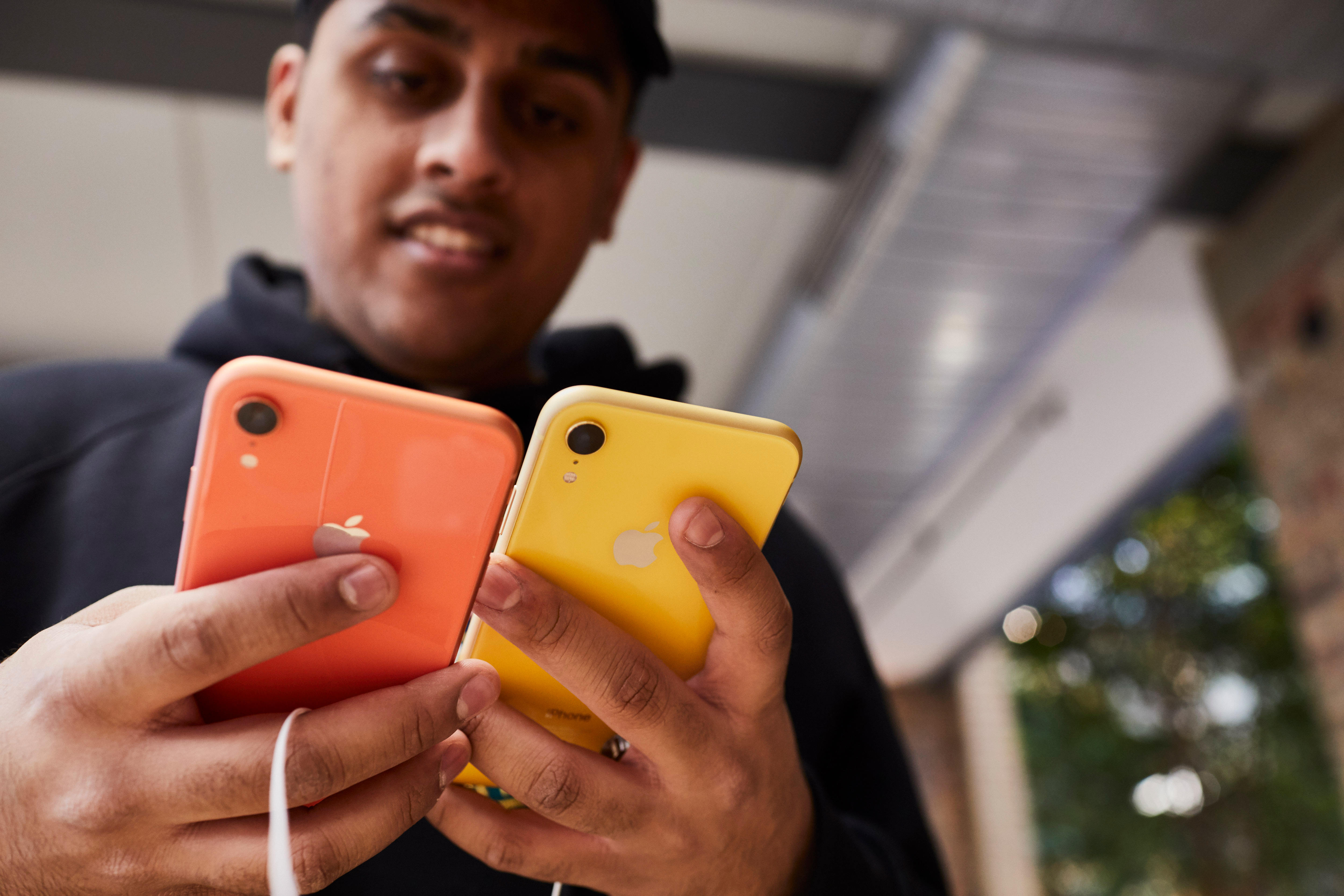- The smartphone market is showing signs of stagnation, with Apple, Samsung, and Google all reporting this week that it’s harder to sell a premium smartphone than it used to be.
- This is for several related reasons: higher costs for incremental improvements, people keeping their current phones or buying cheaper models.
- Apple is fighting this smartphone slowdown by focusing on services like Apple Pay or the Apple TV Plus streaming service, where it can make more money per users.
- Samsung is betting on new developments like 5G internet and foldable screens.
- Both bets are risky in their own ways, and neither seems likely to completely make up for the slow decline of the overall smartphone market.
- The next big gadget is coming: augmented reality goggles. But it’s not ready for prime time, and may not be for some while.
- Visit BusinessInsider.com for more stories.
Apple’s latest quarter was sort of a bad news/good news situation.
The bad news is that sales of the iPhone were down some 17% from the same period of 2018. The good news is that Wall Street seems to believe that there’s nowhere for the iPhone to go but up, sending Apple’s stock soaring.
There is, however, worse news – not just for Apple, but for the entire smartphone industry.
Analyst firm IDC reports that smartphone shipments for the first quarter of this year were down 6.6% from the same period of 2018, the same week that Google CEO Sundar Pichai said that it’s harder than it used to be to sell pricey, high-end phones. Samsung, too, reported earnings this week, and said that it expects competition in the “mature” smartphone industry to put more pressure on its business in the second half of the year.
It is hard to see how, or if, the smartphone market returns to growth from here.
Holding fast
As long ago as 2017, we got indications that people were hanging onto their smartphones longer. In 2018, major hedge fund Maverick Capital said that the "glory days" of the smartphone revolution were behind us, as the increasingly scant differences between older and newer devices make it harder to justify each successive upgrade.
New customers are going to be hard to find, too - at least domestically, as nearly 80% of Americans have smartphones these days.
Different companies are taking different tactics to hedge against this slowdown.
Apple has, for instance, doubled down on its services business - Apple Music, iCloud, and Apple Pay - to help the company generate more revenue per iPhone user, which could offset slowing device sales. Expect that strategy to escalate in the future, as the Apple TV Plus streaming service and the Apple Card credit card roll out to consumers.
This approach is showing some positive early signs, with Apple reporting this week that its services revenue in the latest quarter was up 16% from the same period a year ago.
Others, like Samsung, Huawei, and Motorola, are forging ahead in the smartphone market, with bets that new technologies like high-speed 5G wireless internet and foldable screens will entice people to upgrade. Samsung alone is expected to ship this year a 5G-compatible version of the Samsung Galaxy S10, as well as the delayed Galaxy Fold foldable smartphone.

Realistically, it's going to be a long time before 5G truly blankets the world, and the fiasco around the Samsung Galaxy Fold - where some reviewers found that the device broke after only a couple of days of use - shows that it may be a while before foldable smartphones are truly ready for prime time, if they ever are.
And no one can ignore that flagship smartphones are getting pricier: The Samsung Galaxy S10 starts at $900; the latest-model iPhone Xs starts at $999. Prices will, at least at first, be going up from there. The Samsung's 5G-equipped Galaxy S10 will retail for $1,300, and the Galaxy Fold will top that with a starting price of $1,980.
Eventually, prices are likely to level out, as they always do in the years following the introduction of new technology. Still, this is going to be a tough sell in the short term - folding screen or no, and 5G wireless internet or no, these devices really just run the same apps and websites as less expensive phones, with little meaningful functional difference. Besides, companies like OnePlus are making perfectly good phones, at medium-range prices.
So while the smartphone market is not all doom-and-gloom, the glory days of the early smartphone boom are not likely coming back for anyone.
So what comes next?
The good news is that we can already see what comes after the smartphone. Just about every tech company in Silicon Valley and beyond is at least experimenting with augmented reality (AR), the technology for projecting digital imagery over the real world.
Companies including Apple, Facebook, Microsoft, Samsung, Google-backed startup Magic Leap, and even "Fortnite" developer Epic Games all consider AR to be the next great computing interface. Microsoft and Magic Leap already have AR goggles on the market, with Apple said to be working on "smart glasses" that could be unveiled as soon as this year.
It's pretty clear that all of these companies are looking to AR as the next big gold rush in tech, following the slow stagnation of the smartphone industry.
They may be right - it's hard to imagine it not happening, given the sheer scale of the investment that every company is making in the market.
The problem, though, is that augmented reality is nowhere near the point where it can replace the smartphone in any regard. Strictly in terms of functionality, these headsets are too expensive (Microsoft's HoloLens 2 is $3,500), too limited (Magic Leap One and HoloLens 2 both have small fields of view), and, frankly, you look like a dork wearing one, as I can personally attest:

So while there will be a big new thing coming, as there always is, it's clear it won't be here fast enough to bail out the smartphone market.

